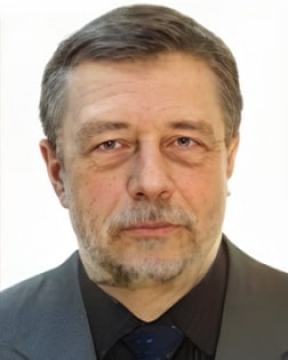 |
Prof. Vladimir Valentinovich EgorovNRC “Kurchatov Institute”Theoretical And Applied Nanoscience: Quantum–classical Mechanics, Egorov Nano-resonance, The J-band Of J-aggregates, And Beyond Kanatzidis International Symposium (4th Intl. Symp. on Materials/Solid State Chemistry and Nanoscience for Sustainable Development) Back to Plenary Lectures » |
Abstract:The well-known narrow and intense optical absorption J-band arises as a result of J-aggregation of polymethine dyes in their aqueous solutions. The J-band was discovered experimentally by Jelley and independently Scheibe in 1936. In 1938, Franck and Teller gave a theoretical explanation of the J-band based on the Frenkel exciton model. Subsequently, this explanation was developed in details by many authors. A drawback of this explanation is its inability to explain the shape of optical bands of polymethine dye monomers from which J-aggregates are formed. We give an explanation of the J-band in the framework of a new theory, quantum–classical mechanics [1–3], which includes an explanation of the shape of the bands of polymethine monomers. In quantum–classical mechanics the initial and final states of the “electron+nuclear environment” system for its “quantum” transitions are quantum in the adiabatic approximation, and the transient chaotic electron-nuclear(-vibrational) state due to chaos is classical. This chaos is called dozy chaos. The new explanation of the J-band is based on the so-called Egorov nano-resonance discovered in quantum–classical mechanics [4]. Egorov nano-resonance is a resonance between movements of the electron and the reorganization of the environmental nuclei during quantum–classical transitions in the optical chromophore under weak dozy chaos. In addition to explaining the nature of the J-band of J-aggregates, an explanation is given for the shift of the Egorov nano-resonance observed in polymethine dyes to the long-wavelength region with decreasing polarity of the solvent [5], the shape of the optical absorption bands of their dimers, H- and H*-aggregates [5], the shape of the optical absorption and luminescence bands of J-aggregates in Langmuir films [6], as well as an anomalously small Stokes shift of the J-bands of luminescence and absorption [6]. An explanation is given for the experimentally observed strong parasitic violation of the Egorov nano-resonance during the transition from one-photon to two-photon absorption, and the conditions for its restoration are predicted [7]. The idea of creating “living materials” is put forward, and a method for its practical implementation is indicated by purposefully complicating the design of molecular systems, the heuristic source of which can be the high dynamic organization of quantum-classical transitions in J-aggregates [8]. |
|